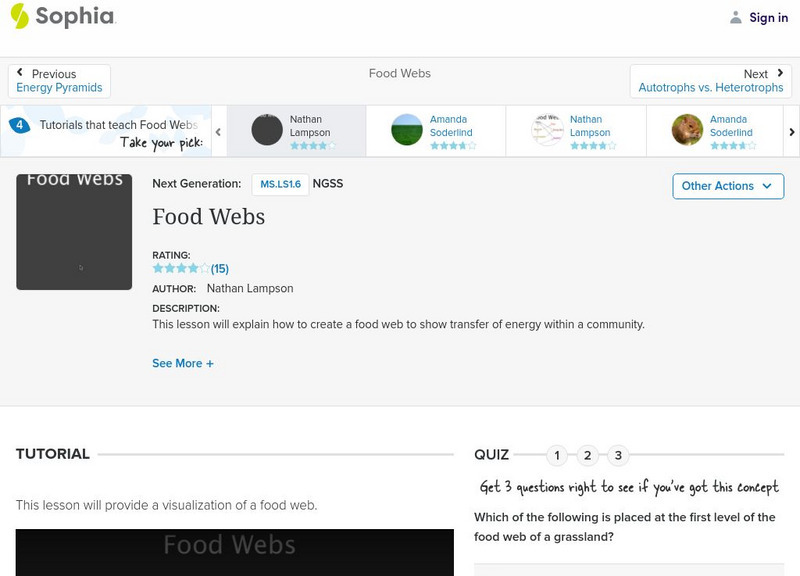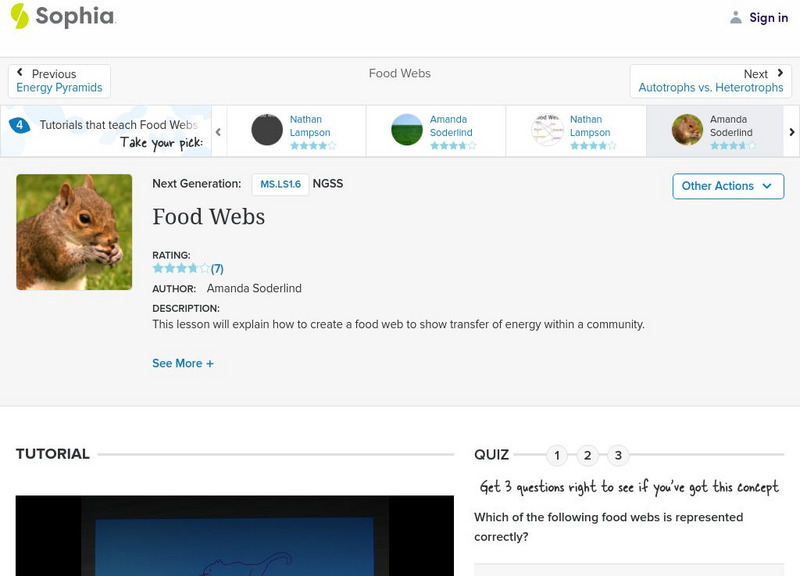Hi, what do you want to do?
SciShow
When Algae Learned to Hunt
You probably don't consider algae to be super aggressive, but 66 million years ago had to turn to murder in order to survive.
Amoeba Sisters
Classification
Explores classification in biology as well as taxonomy hierarchy: domain, kingdom, phylum, class, order, family, genus, and species with The Amoeba Sisters! This video also discusses the importance of scientific names and why...
Amoeba Sisters
Endosymbiotic Theory
Explore the endosymbiotic theory with the Amoeba Sisters! This theory explains the development of the eukaryote cell from prokaryote cell symbiosis. Scientific theories are also briefly defined. Table of Contents: Intro 00:00 What is a...
SciShow
3 Amazing Photosynthetic Animals
Hank's love affair with plants takes a slight hit now that he's learned about several animal species that can photosynthesize. Fortunately, he's excited enough about these animals to share them with all of us! Let SciShow introduce you...
SciShow
When Algae Learned to Hunt
You probably don't consider algae to be super aggressive, but 66 million years ago had to turn to murder in order to survive.
Crash Course
Ecosystem Ecology: Links in the Chain - Crash Course Ecology
Hank brings us to the next level of ecological study with ecosystem ecology, which looks at how energy, nutrients, and materials are getting shuffled around within an ecosystem (a collection of living and nonliving things interacting in...
Curated Video
Importance of Photosynthesis
This video explains how plants and photosynthesis are the basis of all food sources.
Curated Video
Autotroph
An organism that can make its own food, being able to produce complex organic compounds, such as proteins and carbohydrates. A Twig Science Glossary Film. Key scientific terms defined in just 60 seconds using stunning images and concise...
Curated Video
Photosynthesis: Converting Sunlight into Chemical Energy
The process that plants use to convert energy from the Sun into chemical energy. A Twig Science Glossary Film. Key scientific terms defined in just 60 seconds using stunning images and concise textual definitions. Twig Science Glossary...
Professor Dave Explains
Food Webs and Trophic Cascades
Now that we know about nutrient cycling, we are ready to look at food webs as a whole. These represent feeding relationships within a community.These relationships designate certain trophic levels, so let's learn about what these mean...
Visual Learning Systems
The Origins and Early Evolution of Life on Earth
This video provides a brief overview of the early stages of life on Earth, highlighting the importance of organic compounds in the early oceans and the role they played in the development of the first living cells. It also discusses the...
Curated Video
Nutrition and Energy Flow Part 2
In this section, I talk about the sun as a source of energy, consumers vs. producers and cycles found in nature
Curated Video
Nutrition and Energy Flow Part 1
In this section, I talk about the sun as a source of energy, consumers vs. producers and cycles found in nature
Let's Tute
Modes of Nutrition in Living Organisms
This video discusses the different modes of nutrition used by living organisms, including autotrophic and heterotrophic modes. It also covers mixotrophs, which use a combination of both modes.
Sophia Learning
Sophia: Food Webs: Lesson 2
This lesson will explain how to create a food web to show transfer of energy within a community. It is 2 of 4 in the series titled "Food Webs."
Sophia Learning
Sophia: Food Webs: Lesson 4
This lesson will explain how to create a food web to show transfer of energy within a community. It is 4 of 4 in the series titled "Food Webs."
Sophia Learning
Sophia: Autotrophs vs. Heterotrophs: Lesson 4
This lesson will review the difference between autotrophs and heterotrophs, and show how both play important roles in a food web. It is 4 of 4 in the series titled "Autotrophs vs. Heterotrophs." [1:21]








